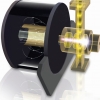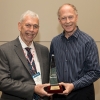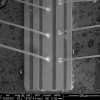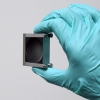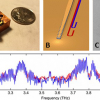News
Terahertz Spectroscopy News
Researchers from Brown University, Rhode Island, USA, have demonstrated a way to use terahertz spectroscopy on the nanoscale.
Karlsruhe Institute of Technology are developing a new compact accelerator, the FLUTE accelerator, which will be used for the development of new accelerator technologies for compact and powerful terahertz sources that can serve as efficient research and application tools.
Achema 2018 is inviting contributions to the Achema Congress and the PRAXISforums; deadline 22 September 2017.
A cooperation between Messe München India and the Indian Pharma Machinery Manufacturers Association (IPMMA) will collocate events jointly representing 600+ global and Indian companies.
TeraView says that its terahertz imaging and spectroscopy products could be employed to help regulatory authorities, law enforcement agencies and industry screen for counterfeit drugs
Researchers have nearly doubled the continuous output power of a terahertz quantum cascade laser. Increasing the continuous output power of these lasers is an important step toward increasing the range of practical applications.
Terahertz radiation is of growing interest due to its potential for new spectroscopy and imaging applications as well as wireless communication networks with extremely high bandwidth. However, there are few off-the-shelf components available for manipulating terahertz waves.
Terahertz imaging technology has the potential to help conservationists and academics better understand the history behind cultural artefacts.
A newly devised frequency comb provides a powerful light source, spanning frequencies of over 550 GHz with a total power of 5 mW. At the heart of the frequency combs are terahertz (THz) quantum cascade lasers (QCLs), which have the advantage of having both high power (in the form of THz radiation) and broadband capabilities (since the QCLs have gain over a wider frequency range). Combining these two elements to make a compact frequency comb generating long-wavelength light in the THz range can produce a useful source of radiation for a variety of applications in imaging, diagnostics, remote sensing and spectroscopy of extremely complex molecules.


